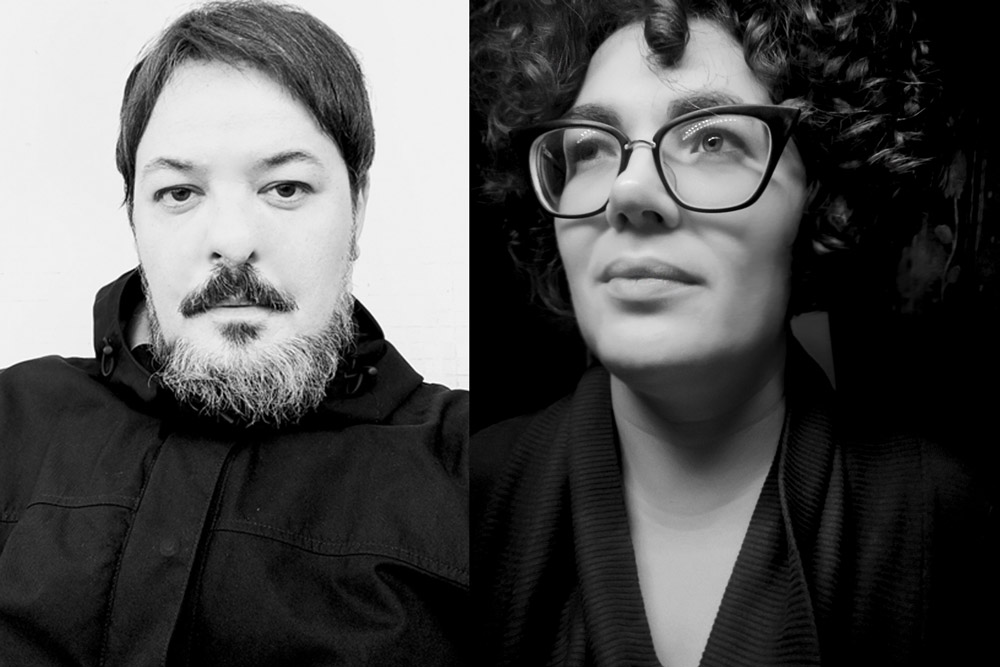
Interview by di A. Wilk and E. Del Medico
An exclusive double interview with Fabio D’Orta (direction, set design, photography, editing, visual effects, costume design) and Mariangela Bombardieri (set design, costume design) on “The Complex Forms” (Italy, 2023), the first work of the independent production company Metronic Films and recipient of the “people’s choice award’ at the fourth edition of EXTRA sci-fi festival Verona.
A fascinating and visionary work “where sobriety and austerity coexist with the fantastic from the unknown, which has always been there, beyond the threshold of our perception” that has won over audiences around the word, judging by the long list of awards and mentions received (it would be too long here to list the festivals in Turin, Rome, Trieste, Porto, Hannover, Clermont-Ferrand, London, Portland, Los Angeles, Mexico City, Sydney…).
Fabio, The Complex Forms is your first film, although you previously worked in set design and special effects. Can you tell us about your professional experience and the types of projects you’ve worked on in the past?
Fabio D’Orta: I’ve always been interested in art in general which led me to experiment with various fields, such as set design, illustration, sculpture and stop-motion, gaining skills that I would later use in cinema. For example, my set design work – which led me to work in theatre and advertising – grew out of the stop-motion work that I was exploring at that time. I wanted to experiment with techniques, aesthetics and other elements that I could use in my animated films. When I saw the results that could be achieved with technology in the field of digital special effects, I immediately became interested, but I always aimed for a realism that would allow me the freedom to create what I could imagine. Except for a few cases, the special effects I’ve created have always been for my own work.
Has making a film always been your main ambition?
FD: As mentioned, making a film has always been the ultimate goal of all my artistic research. Despite my many interests, cinema has always been the final objective, the endpoint where all the experiences and techniques I’ve explored over the years could come together and find their meaning. Each field has pushed me towards that end-point, also since it’s the only place where I can use all the techniques that I enjoy without having to be limited to one.
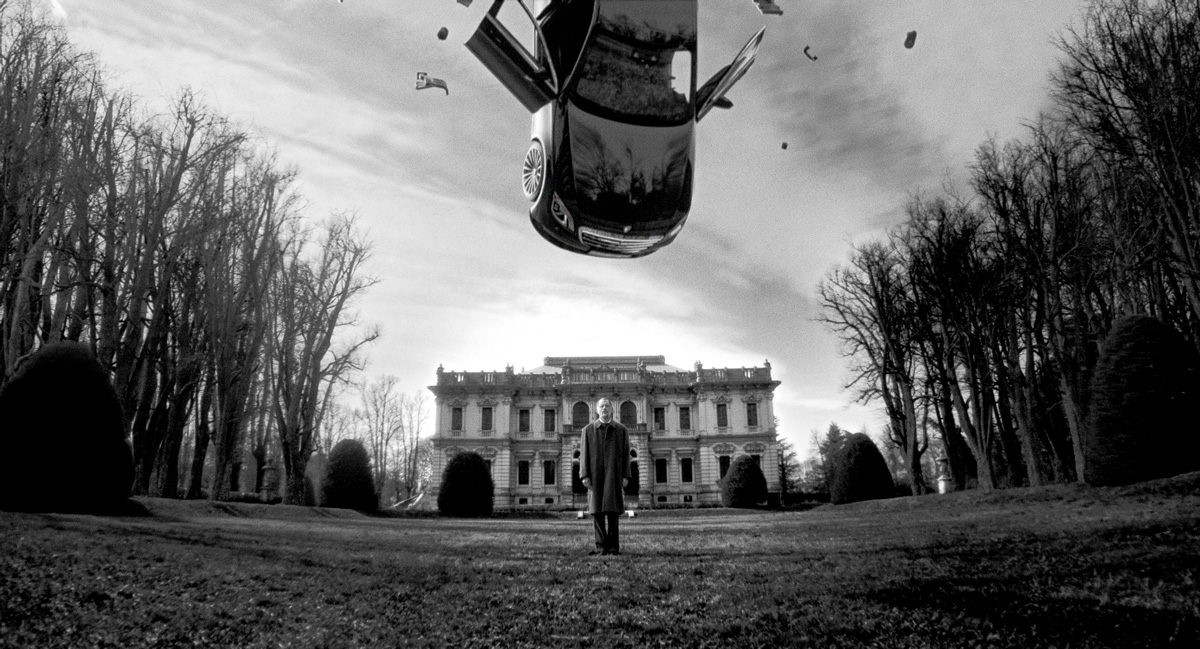
Mariangela, you worked on the set and costume design for The Complex Forms, what is your creative and professional background?
Mariangela Bombardieri: I’ve always loved art in all its forms. I studied Set Design at the Brera Academy of Fine Arts, where I met Fabio. During my years there, I first started working with performance, then installations. I started exhibiting while I also began collaborating with Fabio, first in writing a screenplay and then in the realisation of The Complex Forms.
The aesthetics of this film, particularly regarding the appearance of the creatures, seems to reference a certain baroque style and the decadence of Catholic sites and ex-votos – a fascination is also present in Mariangela’s artistic works such as Spiritus and Lo scapolare. Can you tell us about your aesthetic references and what fascinates you about them?
FD: Mariangela and I share a passion for the sacred world and decorations of every religion. We are both fascinated, I believe, by the suggestive power of spiritual artefacts and their solemnity. The first inspiration for creating the creatures came from observing altars in Christian churches. I had the mental image of a series of moving altars. Subsequently, I became interested in photos of trucks from some regions of the South, which are meticulously covered with all kinds of decorations or shiny plates, creating a regal effect. I started drawing the creatures following these inputs, ending up adding elements from the crustacean world and the human body.
MB: We share a passion for sacred and non-sacred rituals of any religion or country, we love anatomy museums and wunderkammer, we have books and objects related to these traditions. The creatures were born from various hand drawings by Fabio that, over time, took shape in 3D and became animated beings. Personally, I love local traditions as manifestations of messages and requests, I find these rituals fascinating both for the clothes, objects, and times that compose them and for the idea of preserving and leaving these moments of community life to posterity. Obviously, I channel this passion into my artistic research, where tradition and technology complement each other. Spiritus is a device that is part of ARA, a series of military tactical devices for protecting the most immaterial part of the human body, in this case, the breath, sigh, or respiration. In Lo scapolare, I liked the idea of taking a typical garment from monastic tradition and transforming it into a healing vibrational object. Sacred vestments, embroidery, churches, and anatomical museums are certainly references that feed my research.
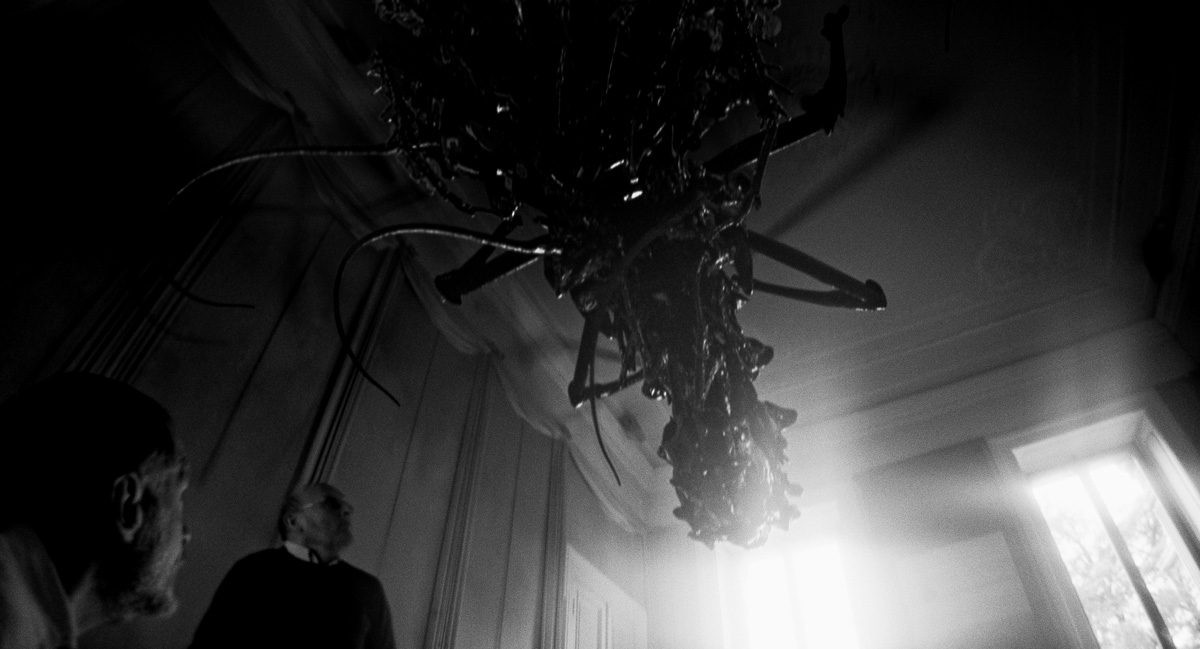
The film’s location is the suggestive Villa Mazzotti in Chiari (BS). Why did you choose this palace and how much did its architecture influence your artistic choices?
FD: Actually, I had found that location for another film that I ultimately didn’t make, but I remained eager to recount some kind of narrative in that place. Despite the initial project not materialising, the atmosphere and story I could imagine there have always fascinated me. Its elegant but decaying architecture certainly influenced the overall atmosphere of the film, adding an almost surreal dimension that perfectly matched the story I had in mind. So I decided to revisit it and bring it to life in this new project.
As your first film, can you tell us about the challenges you faced during its realisation?
MB: The first challenge was to hide as much as possible the lack of both economic and production means. We tried to do the best with what we had. We were 3 on set and each did what was needed. It was certainly fundamental that Fabio prepared extensively in pre-production, so as to know exactly what he wanted to achieve and what had to be done each day, anticipating problems and situations that could have jeopardised the filming as much as possible. Fabio’s attitude was also vital, he listened to everyone and guided us to help him achieve his goal. The magic then came from the people who supported us, from our actors, to anyone who gave their small contribution by lending us furniture or helping with the transport of materials. We know that even though it’s not a perfect film, it was necessary to make it to show Fabio’s vision and above all to demonstrate that you don’t need millions to shoot but ideas and talent.
The Complex Forms deals with possession, as the men who enter the villa choose, after signing a contract, to be possessed by mysterious entities for a certain amount of time. It’s interesting to note that all participants are men of similar age, participating in an act usually more strictly associated with women: exchanging one’s body for money. Is there a subtext regarding masculinity, particularly related to men in the second half of their lives?
FD: Elderly men are often fragile, both physically and psychologically, and the film explores this very theme. The idea of a man reaching the second half of life and coming to terms with his identity and vulnerability is central. Possession, in this case, is not just a physical act, but also an emotional and psychological passage, a confrontation with the inevitable decline that comes with age. The fact that there are only men in the film is, in part, also due to the support we received during the project. We were helped by groups like the Alpini and other associations composed exclusively of men, who gave us a hand with great generosity and affection. This reality influenced not only the practical part of the film’s realisation but also its very composition: the idea of a group of men confronting themes of fragility and vulnerability was made even more intense and meaningful by the fact that the community that supported us was composed only of men.
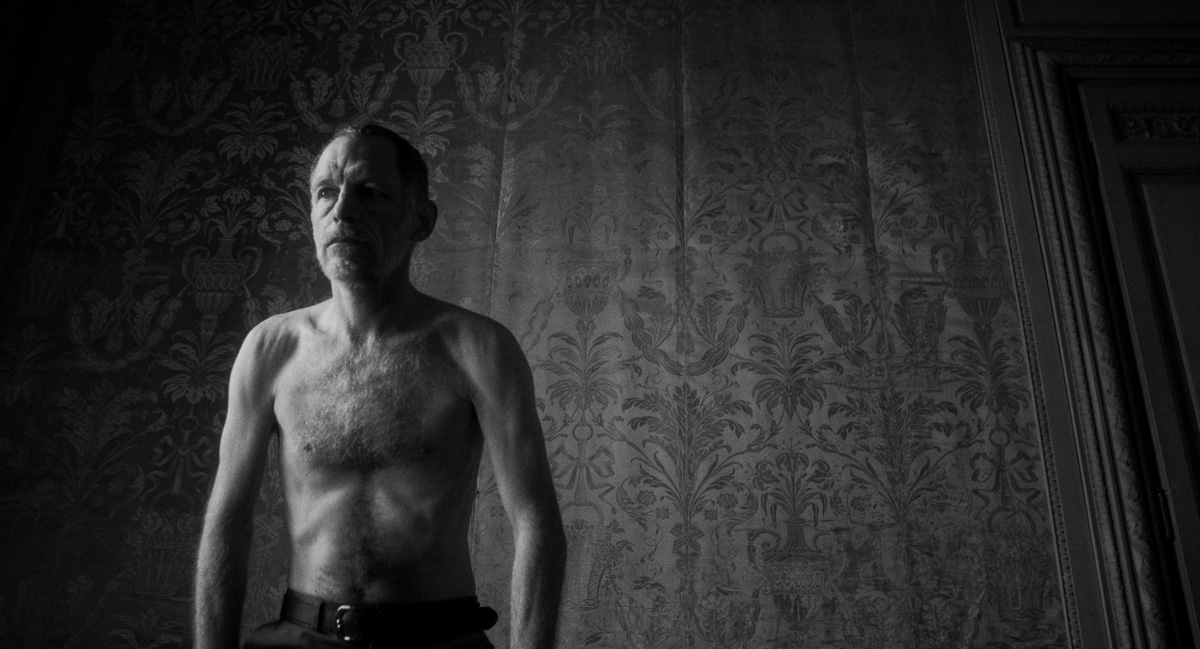
The film has been defined as “metaphysical horror,” the villa in the film is a limbo where time flows differently and the mediator of possession agreements is a sort of priest. Beyond the references to certain Catholic iconography, is there something else allegorical that refers to religion?
FD: Yes, the definition of “metaphysical horror” seems apt to me, because the film moves precisely on that thin line between the tangible and intangible, between what is physical and what is spiritual. The villa, as you said, is a limbo, a non-place where time distorts. This creates a suspended, almost sacred atmosphere, reminiscent of a sort of purgatory, where souls or rather, bodies are waiting for a transformation. The mediator, who is a priestly figure, acts as an intermediary between bodies and entities. But beyond the evident references to Catholic iconography, there’s also a deeper allegory that touches on the concept of “possession” as a metaphor for faith itself. The act of surrendering a part of oneself in exchange for something (whether salvation, redemption, money, or power) is a theme that can be extended to religion, where often the individual offers themselves in sacrifice, hoping to obtain some form of revelation or liberation. In this sense, the film explores religion not so much as a belief, but as an act of abandonment and submission to the will of something greater. The villa and the mediator thus become symbols of a transformation process that, despite its darkness, poses itself as a sort of search for meaning, in which each character is forced to confront their most intimate fears and vulnerabilities.
The music was composed by Riccardo Amorese. Can you tell us about your collaboration?
FD: Riccardo Amorese and I had wanted to collaborate for years. His music played a fundamental role in creating the unique atmosphere of the film. Riccardo is a professional with extraordinary talent who has worked on numerous films and many other projects, always bringing his unique sensitivity. His ability to translate emotions into sounds added a deep and suggestive dimension to the story. It was a real pleasure working with him, and the final result demonstrates how his experience and art have made the entire project special.
Are there Italian films or directors that we could define as your source of inspiration?
FD: I love classic Italian cinema, from directors like Fellini, Antonioni, Ermanno Olmi, to name a few. Similarly, I’m drawn to genre experimenters like Mario Bava, Lucio Fulci, and Dario Argento. However, the only true Italian inspiration related to this film is perhaps from Elio Petri’s Todo Modo, especially for the image of men in long dark coats confined in an almost monastic environment. It wasn’t a direct influence, but over time, I found interesting parallels. The idea of men confronting their contradictions in a place that seems suspended between sacred and profane evoked an atmosphere similar to what I wanted to explore in our film. But in general, the influence of Italian cinema is reflected more in the search for a unique atmosphere and psychological immersion, rather than explicit inspiration from a specific director or film.
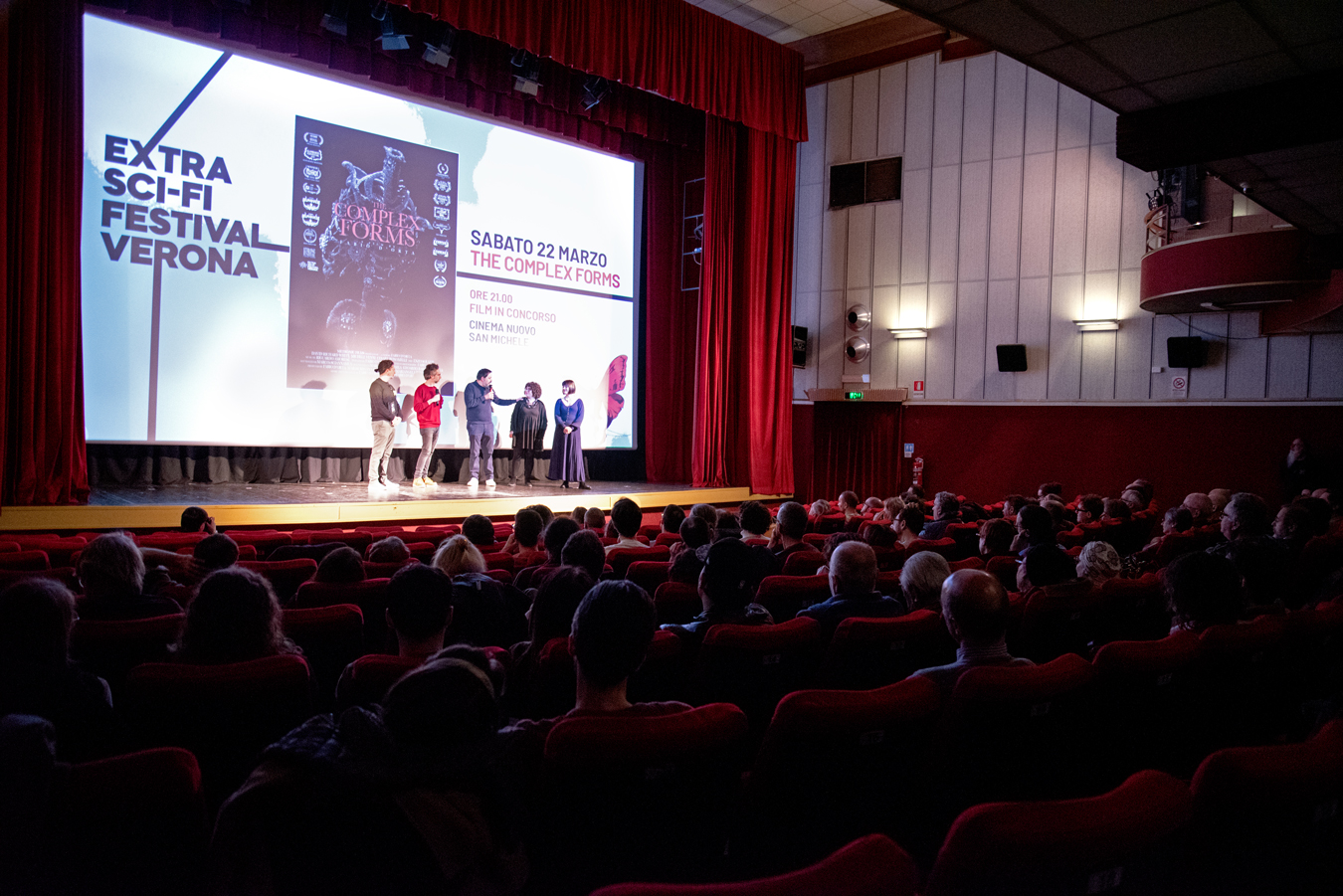
The film has been very well received at numerous festivals, both national and international, receiving several awards, including the “Audience Award” at the latest edition of EXTRA sci-fi festival Verona. How have you experienced the warm reception of your first feature film?
FD and MB: We can only say that everything went beyond any expectation. We love participating in festivals, the exchange and meeting with people is always very stimulating. At the screenings we attended, the reception and enthusiasm were always incredible, and after the screenings, there were many questions and curiosities. To think that some festivals that had films worth millions in their program chose to screen “The Complex Forms” as their opening film is fantastic. Obviously, audience awards are the ones that give the greatest satisfaction because it means that people felt involved and received something from the film, and this is really the most beautiful award for us!
What are the next projects for Fabio D’Orta, Mariangela Bombardieri, and the production company Metronic?
FD: I’m currently working on writing the next film, and I hope it will soon be finished. I would really like Metronic Films to get the project moving, perhaps in co-production.
MB: I recently completed a wonderful residency experience at Casa degli Artisti in Milan. Now I’m working on several projects, ranging from vibrational sound to memory preservation to technological jewellery. As for Metronic Films, I will continue to contribute to its growth with everything I can, and I hope the next step will be the co-production of Fabio’s next film, which he’s already working on.
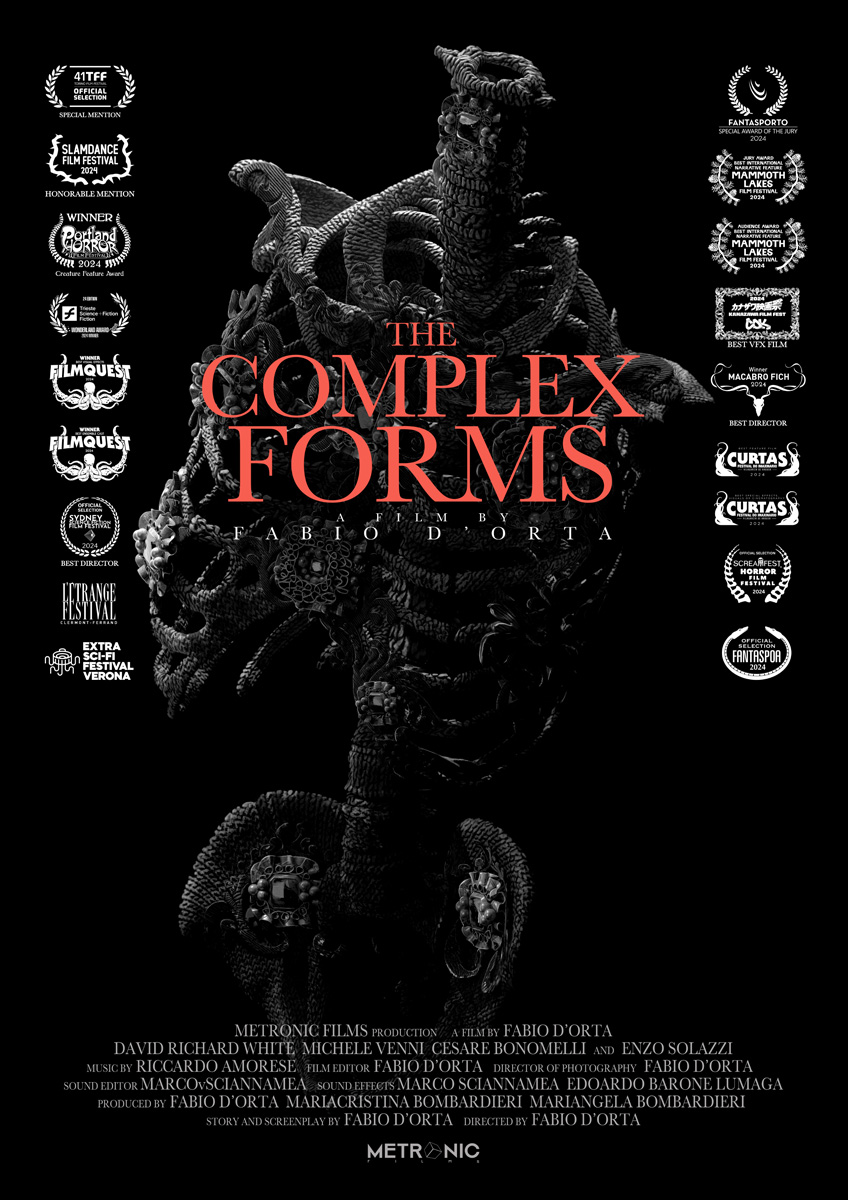
* * *
>The Complex Forms Instagram
> Metronic Films website